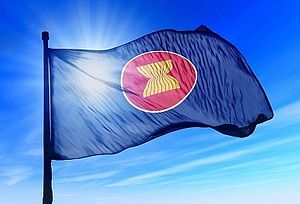Ahead of the 49th ASEAN Foreign Ministers’ Meeting in Vientiane next week, reports are already surfacing that, as many had feared, ASEAN may not issue a separate statement on the ruling of the arbitral tribunal on the Philippines’ case against China in the South China Sea despite the clear case for doing so (See: “After China Meeting, ASEAN Must Heed Early South China Sea Warning“). Accounts from diplomats suggest that though a draft text was prepared, no consensus was reached on whether to issue it as China had once again succeeded in splitting ASEAN through its allies Cambodia and Laos.
That is not surprising. As I have detailed extensively, a similar thing occurred last month at the ASEAN-China Foreign Ministers’ Meeting in Kunming (See: “What Really Happened at the ASEAN-China Special Kunming Meeting“). Furthermore, since ASEAN operates by consensus, the possibility of a separate statement was all but extinguished when Cambodia’s foreign ministry issued a statement this weekend for the first time declaring that Phnom Penh “will not join in expressing any common position” on the verdict. That, combined with Laos’ hesitance thus far as ASEAN chair to push hard on the South China Sea, had left many skeptical that ASEAN would adopt a separate statement in addition to its usual joint communique as well as the individual statements released by most Southeast Asian states following the verdict.
This is unquestionably unfortunate. As I wrote last week for The Straits Times, a separate statement that responds to rather than supports the verdict, and cites principles like the peaceful and lawful resolution of disputes and the need for all countries to respect legal and diplomatic processes without resorting to force, makes sense and is perfectly in line with how ASEAN has dealt with other issues (See: “ASEAN Should Be Ready With Joint Statement on South China Sea Arbitration“). Even though only four ASEAN states are claimants in the South China Sea disputes, all ten of them have an interest in seeing disputes resolved peacefully and lawfully, ensuring that basic principles in the rules-based international order like the freedom of navigation and overflight are protected.
ASEAN has also issued similar separate statements on issues of regional and global importance over the years apart from its usual joint communiques, including on the South China Sea as it did in May 2014 under Myanmar’s chairmanship. This happened even though Myanmar, like Laos, is not a claimant in the South China Sea disputes.
Some would argue that there may be a silver lining in all this. In particular, since the ruling was such a sweeping rebuke against China, the focus, they say, should be on trying to reassure Beijing and give it the space it needs to adopt a more restrained course. Following from this, a separate statement could be viewed by China as an escalatory step that may force it to react in kind.
Giving Beijing the space it needs to adopt a more restrained course is important, and a number of actors, including the Philippines and the United States, have already been bending over backwards to do that. But there are also limits to how far this reassurance ought to go. A separate statement in support of the basic principles undergirding an international legal decision on an issue of clear interest to all Southeast Asian states – as opposed to one which directly supports the ruling – is far from provocative. Indeed, given the assertive actions that China has taken – which include seizing Scarborough Shoal from the Philippines in 2012, deploying an oil rig into Vietnamese waters in 2014, and increasingly bold incursions into Malaysian and Indonesian waters – for Beijing or others to suggest that supporting peaceful and lawful ways of resolving disputes is provocative would be nothing short of laughable.
That said, even if ASEAN does not end up adopting a separate statement, it cannot stay silent on the South China Sea issue. At the very least, the grouping needs to ensure that its joint communique contains language that supports the principles inherent in the ruling and Manila’s pursuit of the case. A good reference point would be the U.S.-ASEAN Sunnylands Summit back in February, which all 10 ASEAN states – including Cambodia and Laos – agreed to. That statement did not just refer to general principles, but also the importance of “full respect for legal and diplomatic processes without resorting to the threat or use of force,” a clear reference to the need for both China and the Philippines to abide by the verdict (See: “A US-ASEAN South China Sea Failure at Sunnylands?“). This is not just the outcome of a U.S.-ASEAN statement: the media statement initially agreed to by all ASEAN countries last month in Kunming also contained similar language. Walking back on what ASEAN has been referencing in its statements so far this year would rightly be viewed as a failure.
In addition, preparations need to be made to ensure that consensus within ASEAN does not break down at the last minute, as it did in Kunming last month and Phnom Penh back in 2012. Given Laos’ predictably lackluster leadership thus far as ASEAN chair on the South China Sea issue, the role of other countries –such as Malaysia, a quieter claimant which has been willing to play an important bridging role in the past, or Singapore, an interested party which has stood up for ASEAN unity on this issue – will be critical too. If there is a breakdown, ASEAN will need strong leadership to pick up the pieces, as was demonstrated in 2012 by then Indonesian Foreign Minister Marty Natalegawa with his intense round of shuttle diplomacy to broker a six-point consensus after Phnom Penh.

































